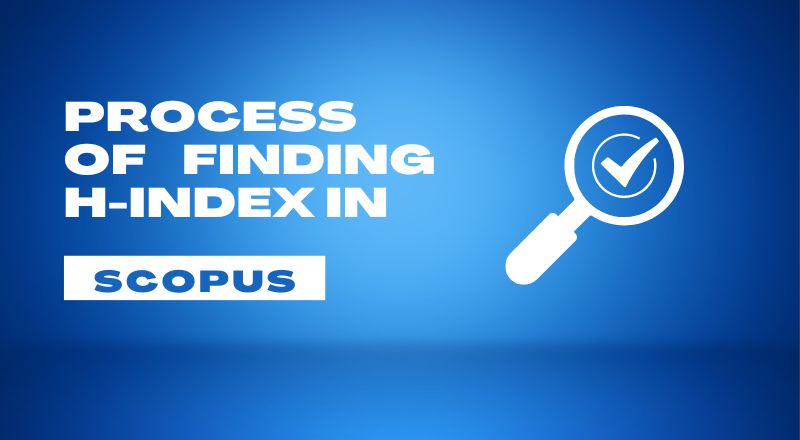As a researcher, one of the most important metrics to evaluate your research output is the H-index. The H-index is a numerical value that reflects both the productivity and impact of a researcher’s work. There are several databases that calculate the H-index, but in this article, we will focus on Scopus. Scopus is a bibliographic database that indexes scientific journals, books, and conference proceedings. In this article, we will also unveiling the process of finding the H-index in Scopus.
Unveiling the Process of Finding H-Index in Scopus

Step 1: Sign in to Scopus
To access Scopus, you need to have a subscription or institutional access. Once you have access, visit the Scopus website and sign in to your account.
Step 2: Search for Your Name
Once you have signed in, search for your name in the ‘Author Search’ bar on the Scopus homepage. Scopus will then display a list of authors with similar names. Select your name from the list.
Step 3: View Your Author Profile
Once you have selected your name, Scopus will take you to your author profile. This profile contains a list of your publications, citation count, and H-index. If you have not yet set up your author profile, you can do so by clicking on the ‘Edit Profile’ button.
Step 4: View Your H-Index
To view your H-index, scroll down to the ‘Author Metrics’ section of your profile. The H-index is listed under ‘Citation Overview’. Here, you can view your total number of citations, the number of documents that you have authored, and your H-index.
Step 5: Understand Your H-Index
Your H-index is a measure of both the quantity and quality of your publications. To calculate your H-index, Scopus looks at the number of publications you have authored and the number of citations each publication has received. Your H-index is the largest number, h, where h of your publications have received at least h citations each.
For example, if you have authored 10 publications, and 5 of them have received at least 5 citations each, your H-index is 5. This means that you have 5 publications that have been cited at least 5 times each.
It is important to note that the H-index is not a perfect measure of a researcher’s impact. It does not take into account factors such as the field of research, the age of the researcher, or the type of publication. However, it is still a useful metric to compare researchers within the same field of scopus research paper publication.
Conclusion
Scopus is a powerful tool for researchers to track their publications and evaluate their impact. By following the process outlined in this blog post, you can easily find your H-index in Scopus. While the H-index is not a perfect measure of your impact, it is a valuable metric to evaluate your research output and compare yourself to other researchers in your field

